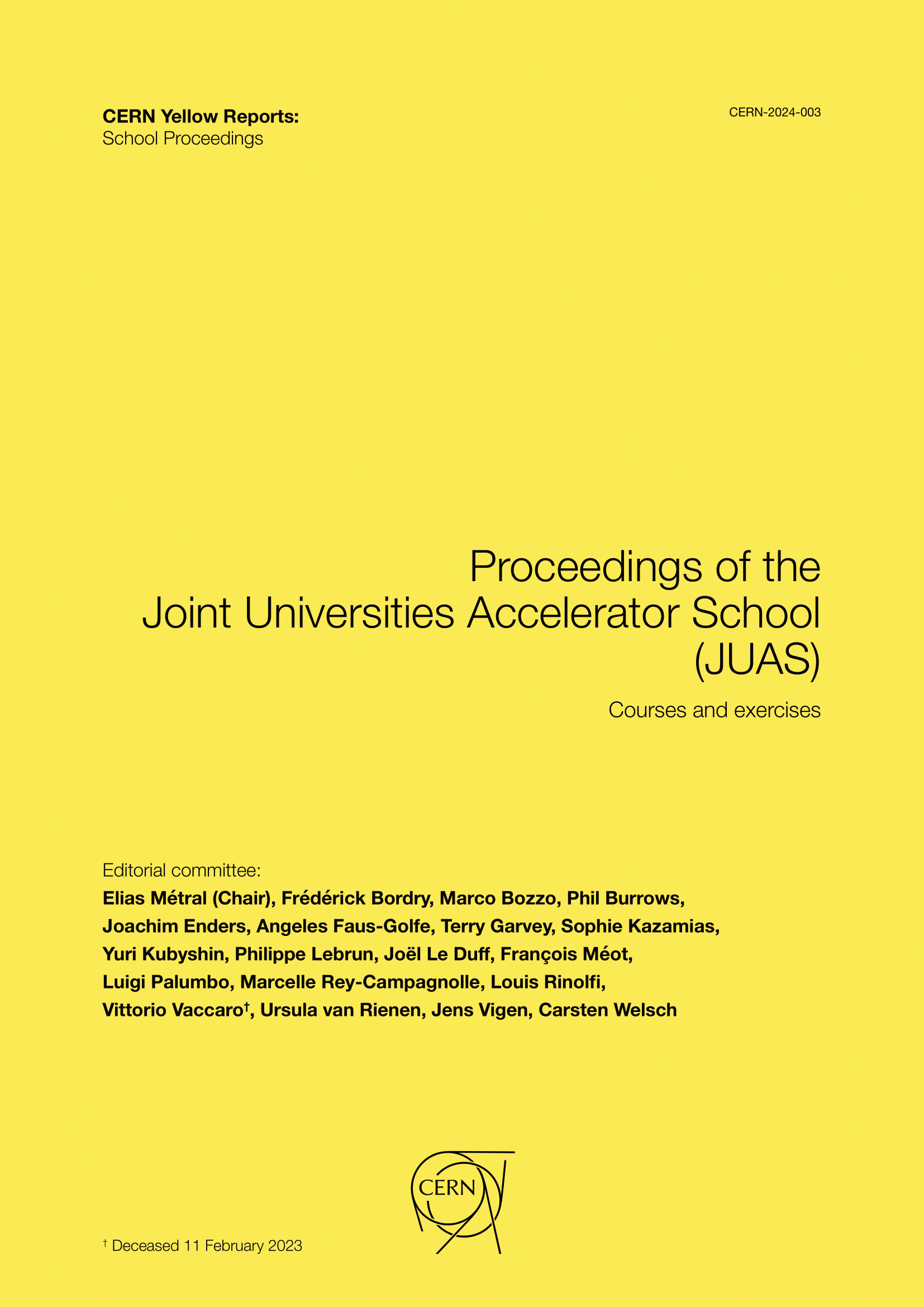III.3 — Introduction to CERN and its accelerator complex
DOI:
https://doi.org/10.23730/CYRSP-2024-003.1903Abstract
The CERN accelerator complex has evolved over nearly 70 years, from the first 16 m circumference machine in 1957, the Synchrocyclotron, to the most powerful synchrotron in the world to today, the LHC, with 27 km circumference. In between, a series of machines were designed, installed and commissioned and most of them are still in operation serving, with an impressive zoo of particles, the very rich and diverse physics programmes carried out at CERN. This chapter gives an overview of the proton and ion accelerator complex, as well as a summary of the different fixed-target experimental areas and facilities served by the complex.
Downloads
Published
Issue
Section
License

This work is licensed under a Creative Commons Attribution 4.0 International License.
Authors who publish with this publication agree to the following terms:
- CERN retains copyright and publishes the work licensed under the Creative Commons Attribution License 4.0 that allows others to share the work with an acknowledgement of the work's authorship and initial publication in this series.
- Authors are able to enter into separate, additional contractual arrangements for distribution of the published version of the work (e.g., post it to an institutional repository or publish it in a book), with an acknowledgement of its initial publication in this series.
- Authors are permitted and encouraged to post their work online (e.g., in institutional repositories or on their website) prior to and during the submission process, as it can lead to productive exchanges, as well as earlier and greater citation of published work (See The Effect of Open Access).

